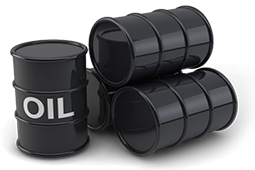
Crude Summit: Global demand will to absorb crude supply

The global oil demand is going to peak at 100mn-105mn b/d but "it is a real high peak," Hobbs said at the Argus Americas Crude Summit in Houston, Texas. Nearly half the demand growth is going to come from petrochemicals. The industry will crack naphtha to make petrochemicals, which means demand for light crude -- whose supplies are growing with the rising US shale output -- will remain supported.
Growing trade tensions between the US and China have weakened the global economic growth outlook, with the IMF this week again scaling back its projections in the near term to 3.5pc/yr growth for 2019, a drop of 0.2 percentage points from its previous forecast in October.
But Hobbs said he is confident the differences will be ironed out.
"The level of trade tension that we are seeing right now is probably not sustainable -- the two largest economies need to trade," he said. "I cannot help but believe that it is all going to work out in the end."
US crude exports will continue to grow in coming years as output increases. He sees steady global demand for the growing US light crude supplies from shale production as many emerging nations expect steady increases in gasoline consumption. Hobbs expects the US will become the fifth largest crude exporter by 2020 and the second-biggest exporter of high-density polyethylene as the nation adds more petrochemical capacity.
Booming shale production largely in the Permian basin is expected to drive US production above 14mn b/d by 2024, the EIA said today in its Annual Energy Outlook 2019. And US output is likely to remain above those levels until 2040, the agency said.


Trump weighs using $2 billion in CHIPS Act funding for critical minerals

Codelco cuts 2025 copper forecast after El Teniente mine collapse

Electra converts debt, launches $30M raise to jumpstart stalled cobalt refinery

Barrick’s Reko Diq in line for $410M ADB backing

Abcourt readies Sleeping Giant mill to pour first gold since 2014

Nevada army depot to serve as base for first US strategic minerals stockpile

SQM boosts lithium supply plans as prices flick higher

Viridis unveils 200Mt initial reserve for Brazil rare earth project

Tailings could meet much of US critical mineral demand – study

Kyrgyzstan kicks off underground gold mining at Kumtor

Kyrgyzstan kicks off underground gold mining at Kumtor

KoBold Metals granted lithium exploration rights in Congo

Freeport Indonesia to wrap up Gresik plant repairs by early September

Energy Fuels soars on Vulcan Elements partnership

Northern Dynasty sticks to proposal in battle to lift Pebble mine veto

Giustra-backed mining firm teams up with informal miners in Colombia

Critical Metals signs agreement to supply rare earth to US government-funded facility

China extends rare earth controls to imported material

Galan Lithium proceeds with $13M financing for Argentina project

Kyrgyzstan kicks off underground gold mining at Kumtor

Freeport Indonesia to wrap up Gresik plant repairs by early September

Energy Fuels soars on Vulcan Elements partnership

Northern Dynasty sticks to proposal in battle to lift Pebble mine veto

Giustra-backed mining firm teams up with informal miners in Colombia

Critical Metals signs agreement to supply rare earth to US government-funded facility

China extends rare earth controls to imported material

Galan Lithium proceeds with $13M financing for Argentina project

Silver price touches $39 as market weighs rate cut outlook

















